Video exampler: coming soon…
Singles and slow-mo: YouTube
Recommended prerequisites: none
Description: The butterfly kick is a spinning whirly kicky floaty…thing. It comes from wushu, and is used as a prerequisite for the butterfly twist in tricking circles…sometimes. A lot of people that go onto butterfly twist rarely care about the butterfly kick — certainly not wushu kind of care. Some never even do it because it isn’t 100% necessary.
My butterfly kick isn’t the greatest, nor do I think it’s necessary to have a stellar butterfly kick to have a good butterfly twist. I do, however, think that the butterfly kick teaches you some intangibles for the twist. It’s worthy of your time to build some aspects of not only technique, but also confidence.
Slide by slide breakdown

The butterfly kick teaches you how to get height, in my opinion. That’s about it. And getting height for the butterfly kick is partly in having a good take off. This breakdown will get a bit technical. Soak in what makes sense, but most importantly: practice. You just need enough to practice rather than paralyze.
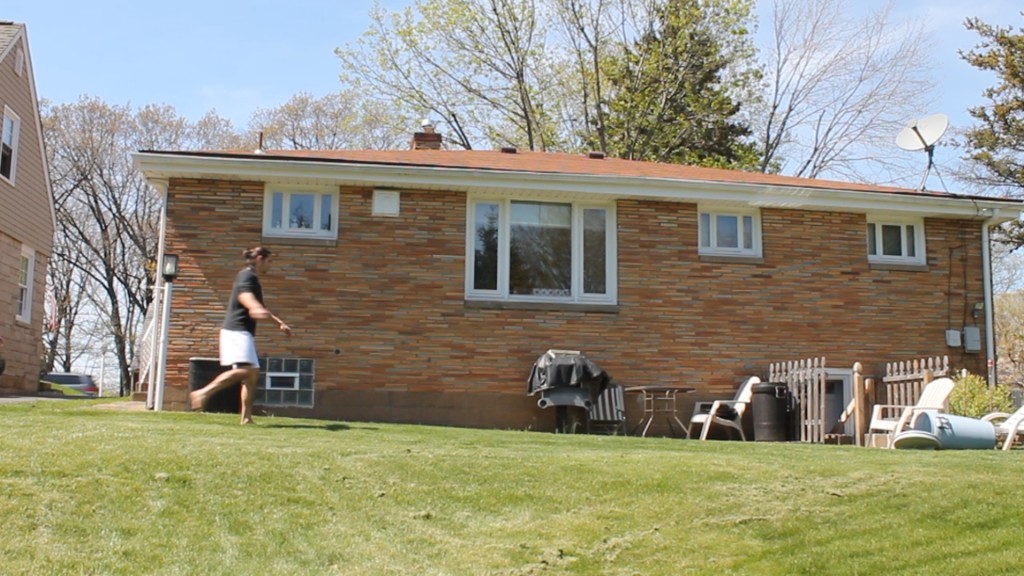
Getting good juice behind the butterfly kick and twist comes from a technique known around the tricking circle as blocking. Blocking is all about knowing how to transform one sort of momentum into another. For this trick, we gather horizontal momentum to help us go vertical. Now, I should also note that there are about a billion ways to enter this trick. I’m just describing the way that works for me.
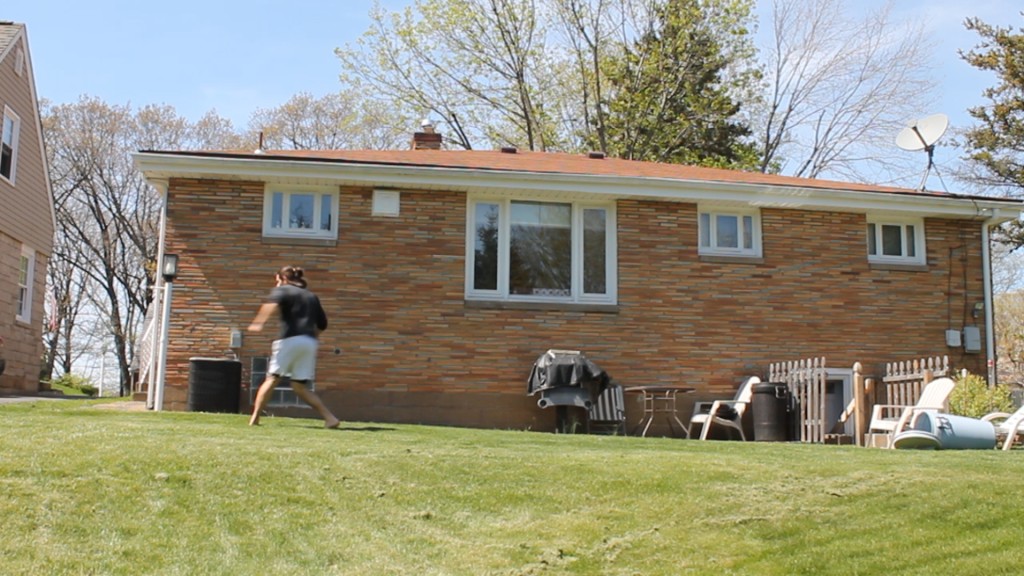
From the first slide, I stepped across my body with my right foot for a little half rotation. Now I’m preparing to swing my left foot out in front of my body. Most people do both the rotation and swing to some extent.

This is the swing. The leg is going to go out in front of my body. Why? Because that’s what blocking is all about. In order to transform horizontal momentum into vertical power, you have to give yourself a launchpad of sorts.
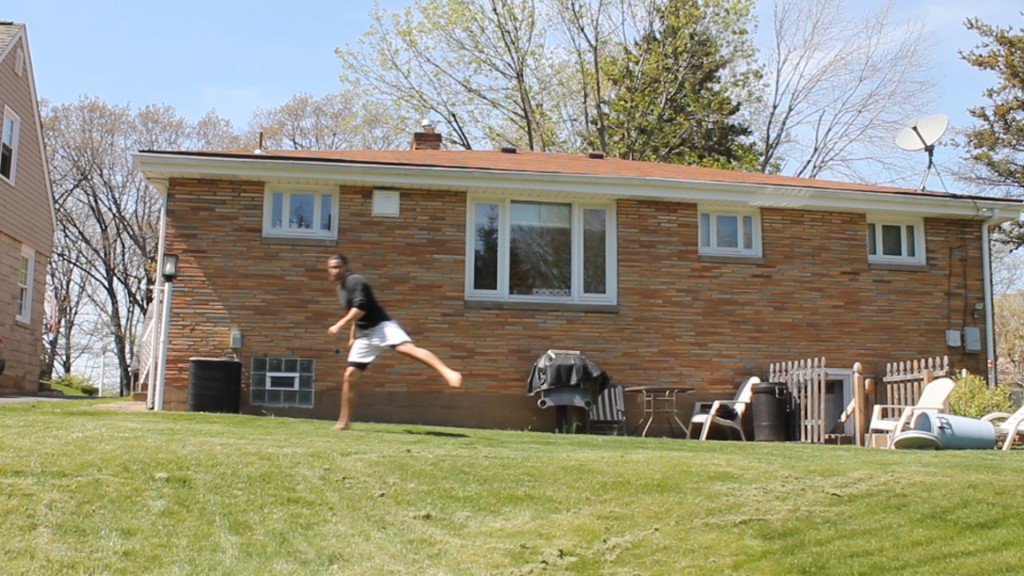
And this is the swing. My swing is kind of average. Some people will have their shoulders closed more (more of my back would be showing), others have their shoulder open more (more of my chest would be showing). With each of these, the body position changes. Closed shoulders = weight more towards rear foot. Open shoulders = weight more towards front.
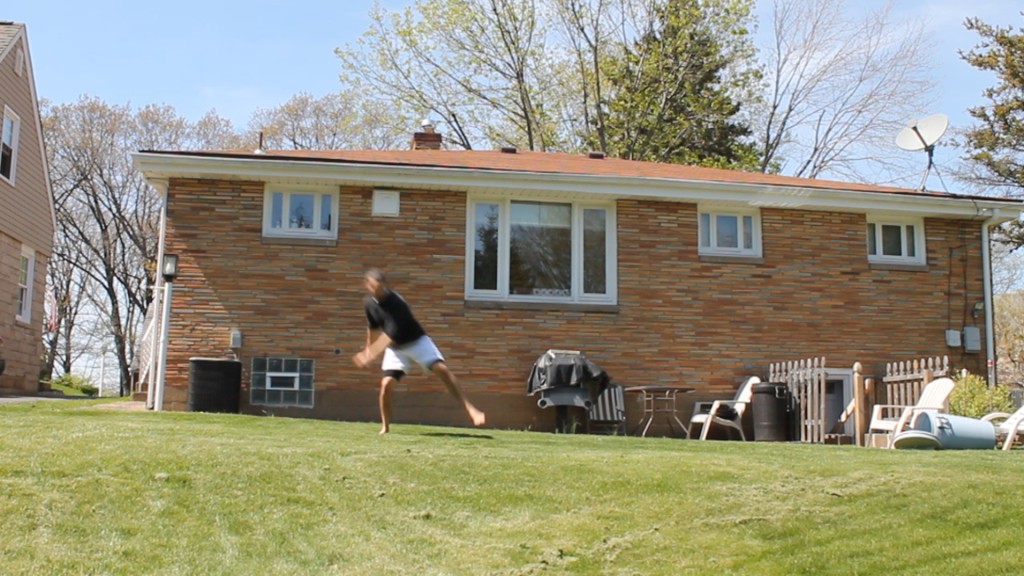
After the swing comes the dip. Most call this the “U” dip, as the general arch of the dip has that shape. This slide is essentially the first half of the U shape. Everything is back. Most of the weight is on my back foot. Arms are back. Shoulders, back. Also important: take a look at my front foot. My hip opened up just a little bit compared to last slide.
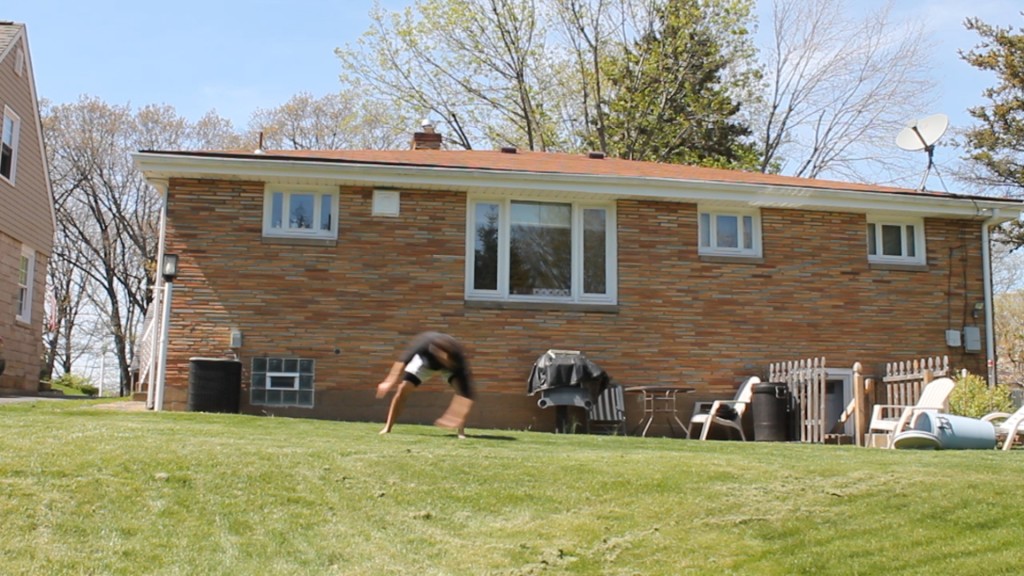
As the dip goes down, everything translates forward. Weight to the forward leg in preparation for the jump. Shoulders come along for the ride.
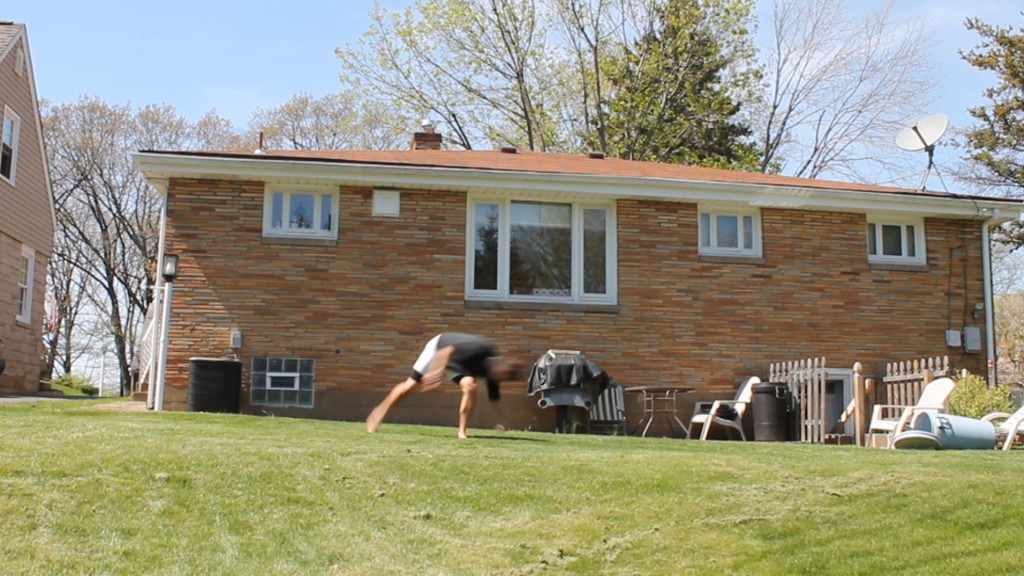
I’m starting the uphill climb of the U, and my rear leg is starting to lift. Rear leg lift is huge for the butterfly kick and twist. It’s what gets your body parallel to the ground, and it’s also what gives you most of your height. Also look at where my torso now is compared to my last slide. Last slide, torso was in front of the knee. Now, torso is over top the knee. Can you guess what’s next?
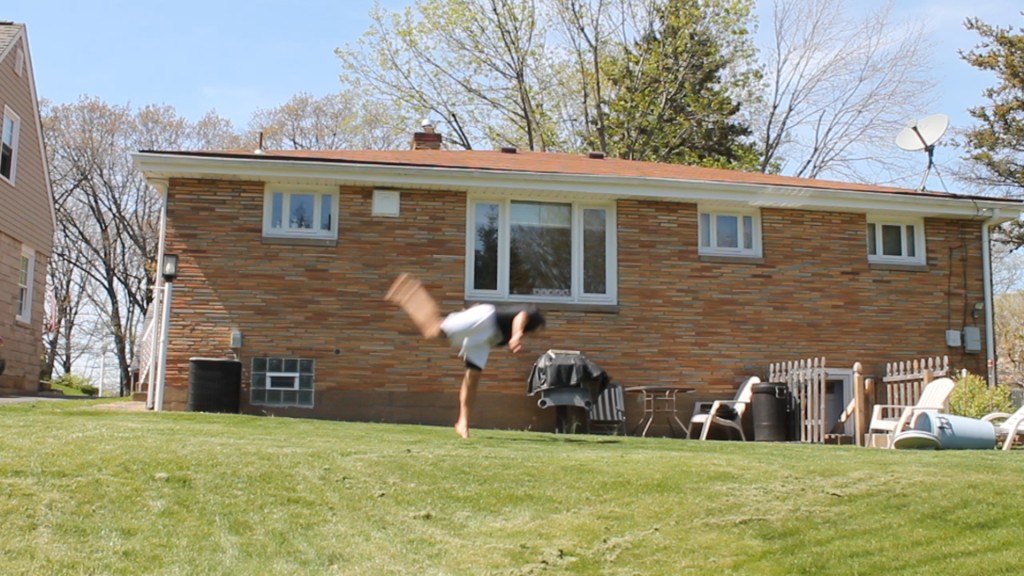
Important things are in front of you. First, look at the lifted leg. It’s high in the air. That’s what you want. Throw that sucker up there. Second, my torso started in front of the lead leg. It went over top last slide. Now it’s actually behind that leg. Think of the U dip in two dimensions. The the first dimension is the torso dropping and coming back up. The second dimension is the torso going across that front knee.
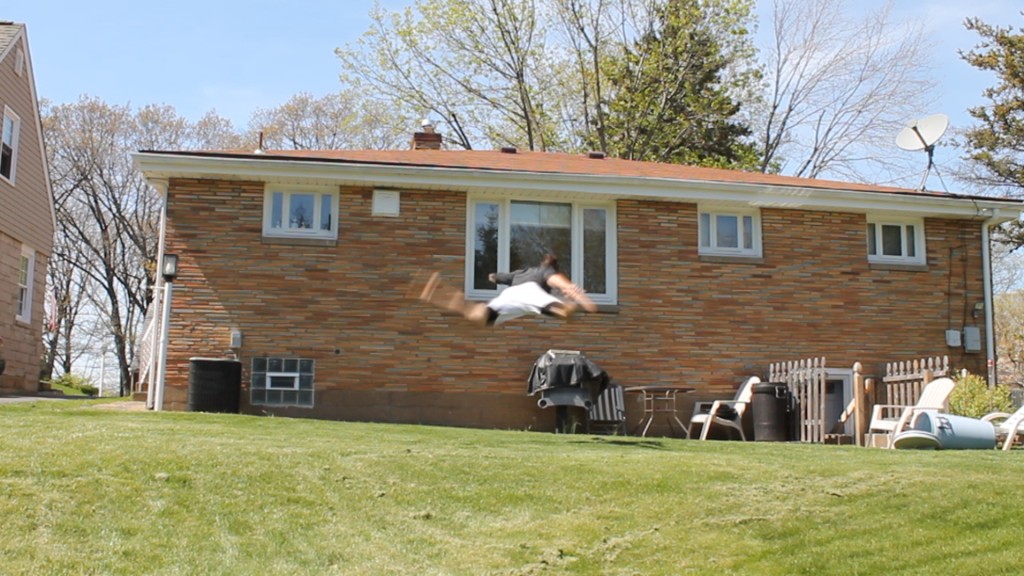
And now for the ugly truth: the rest of the trick doesn’t really matter for butterfly twist purposes, which is why mine is as ugly as all sin. If you watch wushu practitioners do this trick, tape your jaw in place because they float with grace. I sink with garbage, but I’ll try to explain what’s going on anyway.
In the butterfly twist, you throw that back leg up and then coil into a nice little ball of goodness without thinking much about the motion of the legs. In the butterfly kick, the leg that’s thrown up get’s abused by gravity, while the second leg follows in the same path as the first.
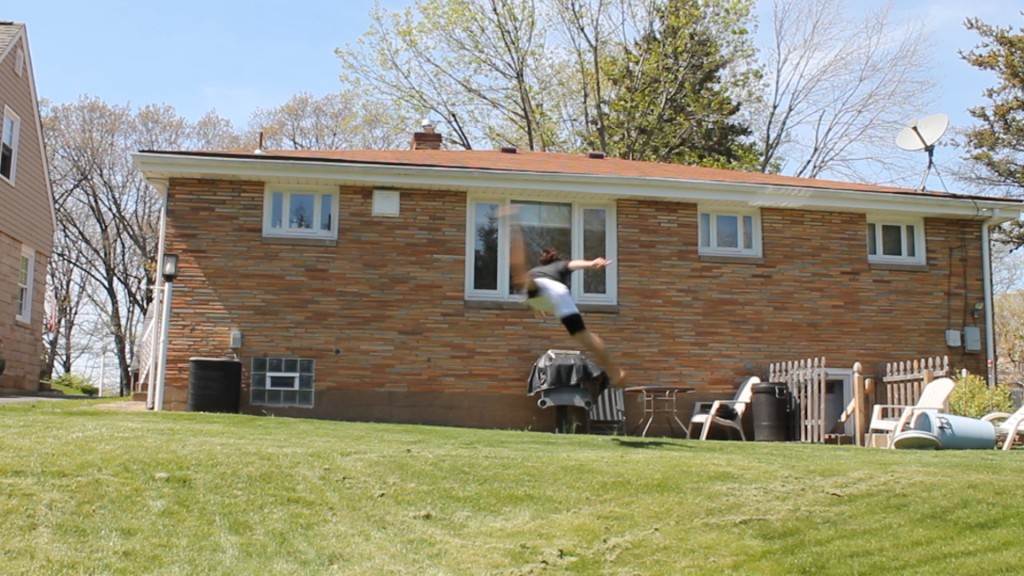
If you’re trying to get a nice and floaty looking butterfly kick, arch your back and control your arms. In most tricks, no arm control = ugly trick. I do neither of these things, which is why my butterfly kick is ugly. Learn from my mistakes.
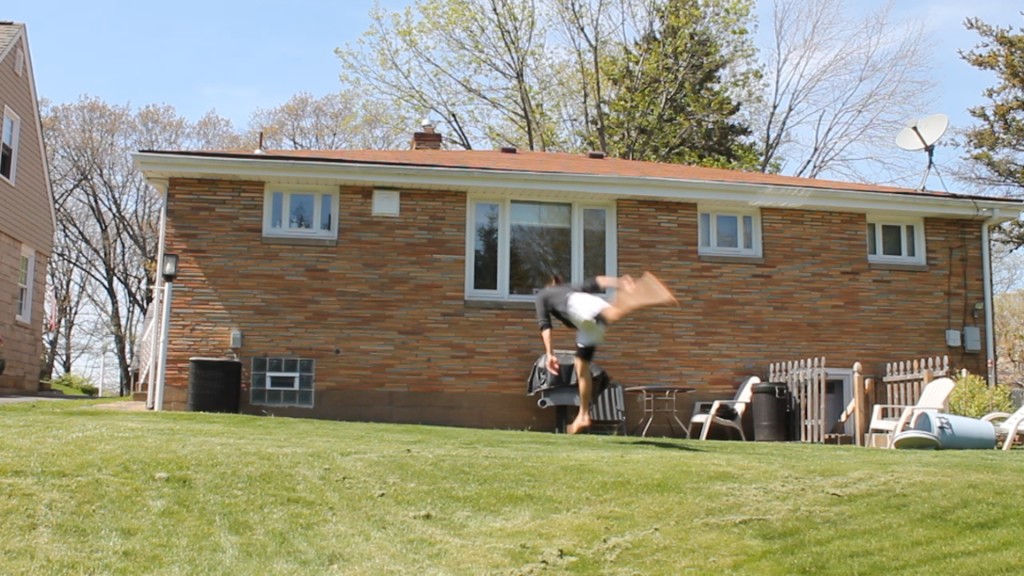
As your legs to the floaty scissor thing, brace yourself for landing. Take note of what direction you’re landing. See how I’m facing the direction I came from? That means I made use of the U in both axes.
Recap cues:
- Swing, dip, jump.
- Play around with different body positions on the swing.
- Dip in two axes. First, down and up. Second, across your lead leg.
- Lift your first leg in the air high.
Troubleshooting:
Legs low? Throw that back leg up high. If you’re doing that, then consider arching your lower back. That usually makes things more floaty and your kicks climb higher.
Body not horizontal? First, see how high you’re bringing it back up after the U. Don’t lift your head or lead with your chest on the takeoff. The head stays down. Second, see how high you’re lifting your first leg in the air. Lift it high.